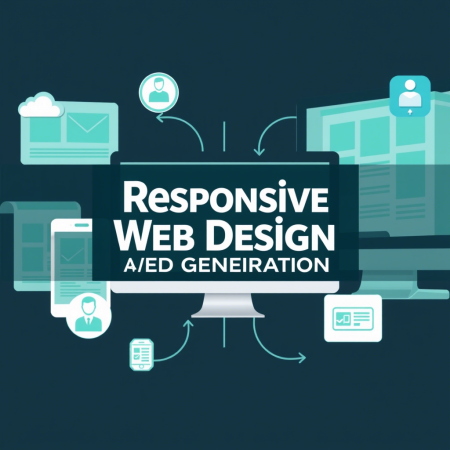Improved User Experience (UX):
Responsive design ensures a seamless and intuitive experience across all devices.
Easy Navigation: Menus and navigation are optimized botim database for touchscreens and smaller viewports, making it easy for users to find information.
Readability: Text sizes and line spacing adjust, preventing the need for zooming and excessive scrolling.
Form Usability: Lead capture forms are designed to be easy to fill out on any device, with larger fields and clear instructions.
Faster Load Times: Responsive design often incorporates practices like image optimization and efficient code, leading to faster loading, which is crucial for retaining impatient mobile users.
Enhanced SEO Performance (Google's Mobile-First Indexing):
Google primarily uses the mobile version of your website for indexing and ranking. If your mobile site provides a poor experience or is not optimized, it can negatively impact your search engine rankings.

Higher rankings mean more organic traffic, and more organic traffic means more potential leads.
Lower Bounce Rates & Increased Time on Site: When users land on a website that's difficult to use on their device, they quickly "bounce" away. A responsive site keeps users engaged, encouraging them to explore more pages and spend more time, increasing the likelihood of lead conversion.
Consistency in Branding: Responsive design maintains a consistent look and feel across all devices. This uniformity builds trust and reinforces your brand identity, making users more comfortable taking action (like filling out a form).
Wider Reach & Accessibility: By catering to various screen sizes and devices, you expand your potential audience, ensuring that anyone, regardless of their device, can access and interact with your lead generation elements.
Key Elements of Responsive Web Design for Lead Generation
When designing a responsive website with lead generation in mind, pay close attention to these elements:
Clear and Prominent Calls to Action (CTAs):
Visibility: CTAs should be easily visible and clickable on all screen sizes, often "above the fold" (visible without scrolling) on desktop and easily accessible as the user scrolls on mobile.
Actionable Language: Use strong, clear verbs like "Download Now," "Get Your Free Quote," "Sign Up," or "Schedule a Demo."
Contrasting Colors: Make CTA buttons stand out from the rest of the page.
Touch-Friendly: Ensure buttons are large enough to be easily tapped with a finger on mobile devices.
Optimized Lead Capture Forms:
Simplicity: Only ask for essential information. Longer forms have lower completion rates, especially on mobile. Use progressive profiling if you need more data later.
Auto-fill & Dropdowns: Utilize browser auto-fill features and dropdowns/checkboxes to simplify data entry.
Clear Labeling: Ensure all form fields are clearly labeled.
Validation: Provide real-time validation to help users correct errors quickly.
Thank You Pages: Always direct users to a thank-you page after form submission, ideally with further instructions or relevant content.
Strategic Content Placement & Readability:
Prioritize Information: On smaller screens, only the most critical information should be immediately visible. Utilize accordions, tabs, or hidden sections for less critical content.
Scannable Content: Use short paragraphs, bullet points, and clear headings to make content easy to digest on any screen.
High-Quality Images & Videos: Ensure media is optimized for fast loading and scales correctly on all devices without distortion. Use srcset and picture elements for responsive images.
Intuitive Navigation:
Hamburger Menus (for mobile): A common and effective pattern for collapsing extensive navigation into a single icon on mobile.
Sticky Navigation: Consider a sticky header or navigation bar on mobile so users can always access key links without scrolling back to the top.
Logical Hierarchy: Organize your site content logically so users can easily find what they're looking for, no matter the device.
Fast Page Load Speeds:
Image Optimization: Compress images, use modern formats (like WebP), and lazy-load off-screen images.
Minimize Code: Reduce CSS and JavaScript file sizes.
Browser Caching: Leverage browser caching to speed up return visits.
Choose a Reliable Host: A good hosting provider significantly impacts speed.
A/B Testing:
Regularly test different versions of your landing pages, CTAs, and forms across various devices to understand what resonates best with your audience and drives the highest conversion rates.
By prioritizing responsive web design, you're not just creating a visually appealing website; you're building a powerful, conversion-focused platform that caters to how modern users interact with the web, directly leading to more leads for your business.